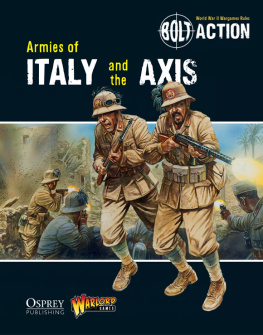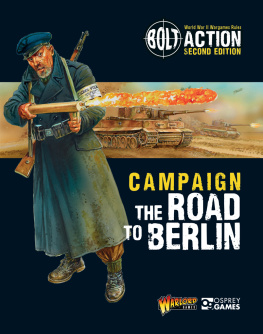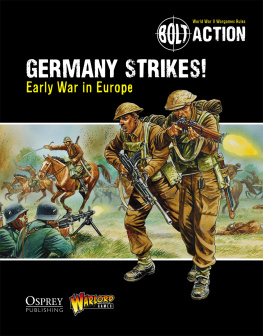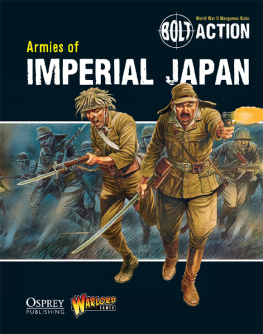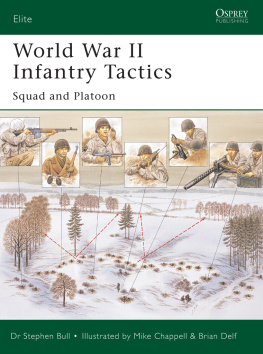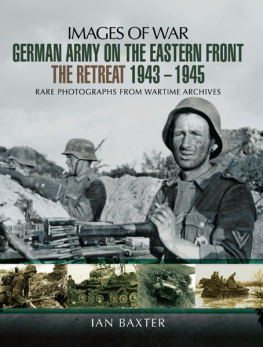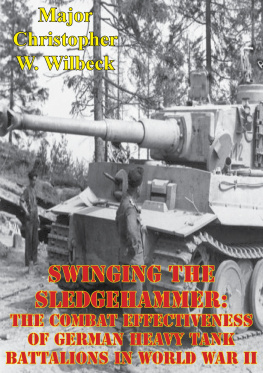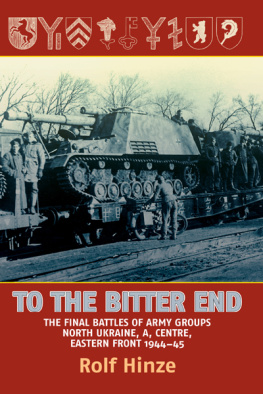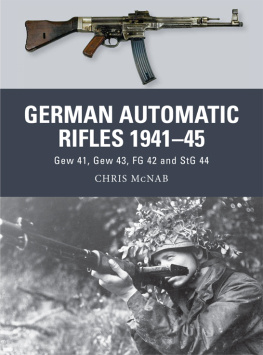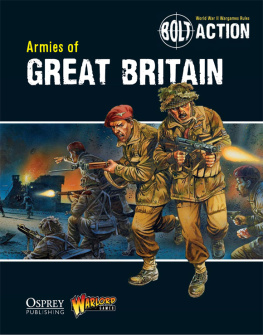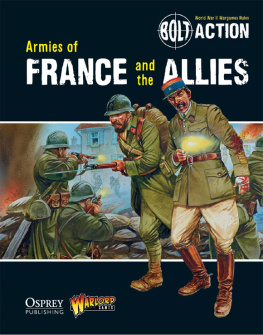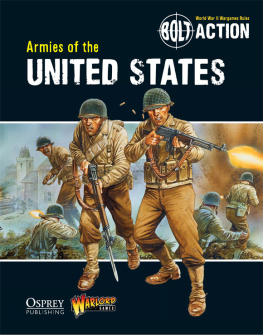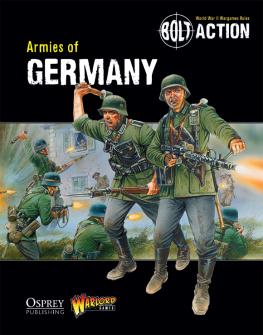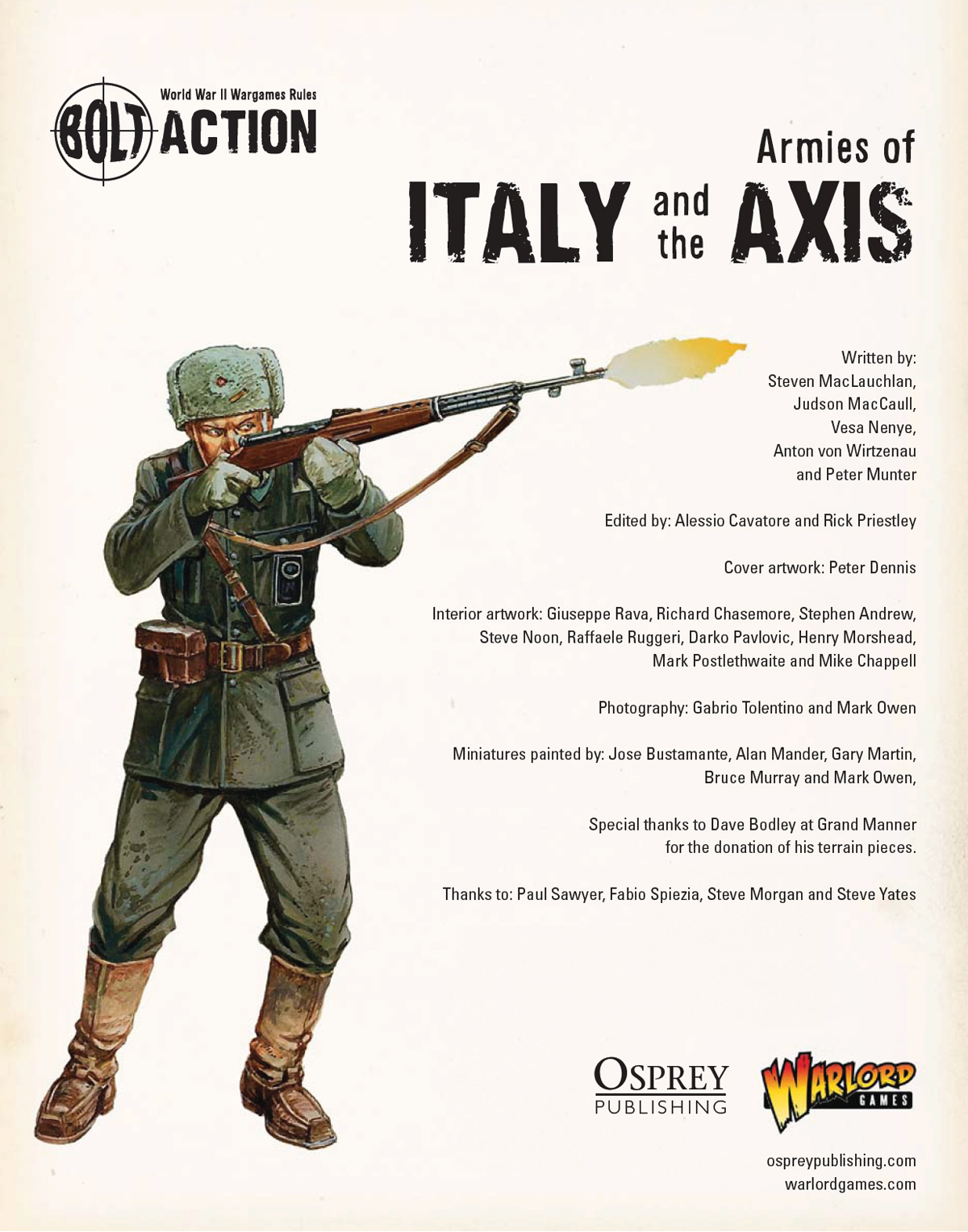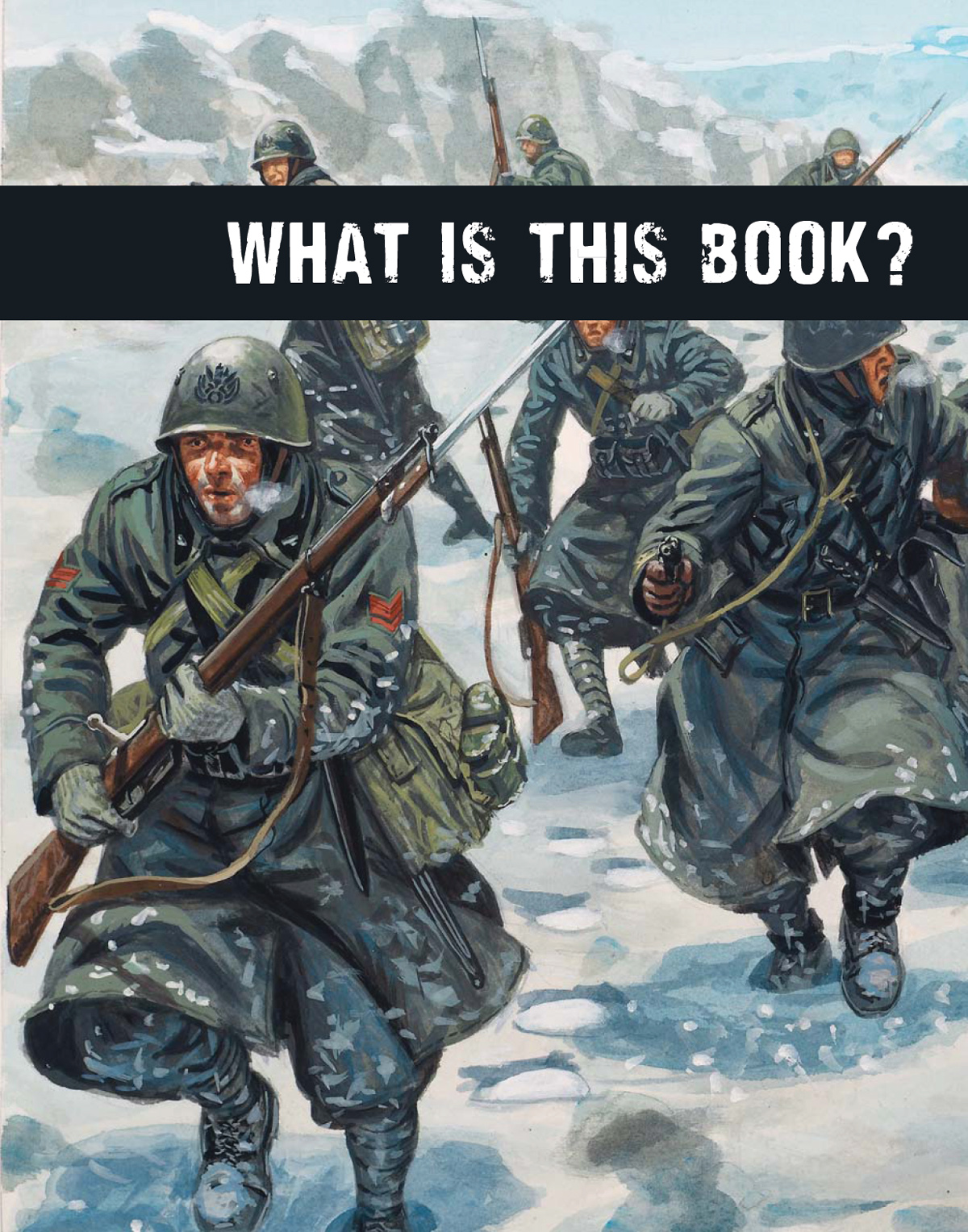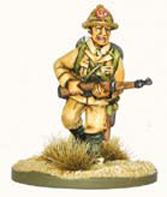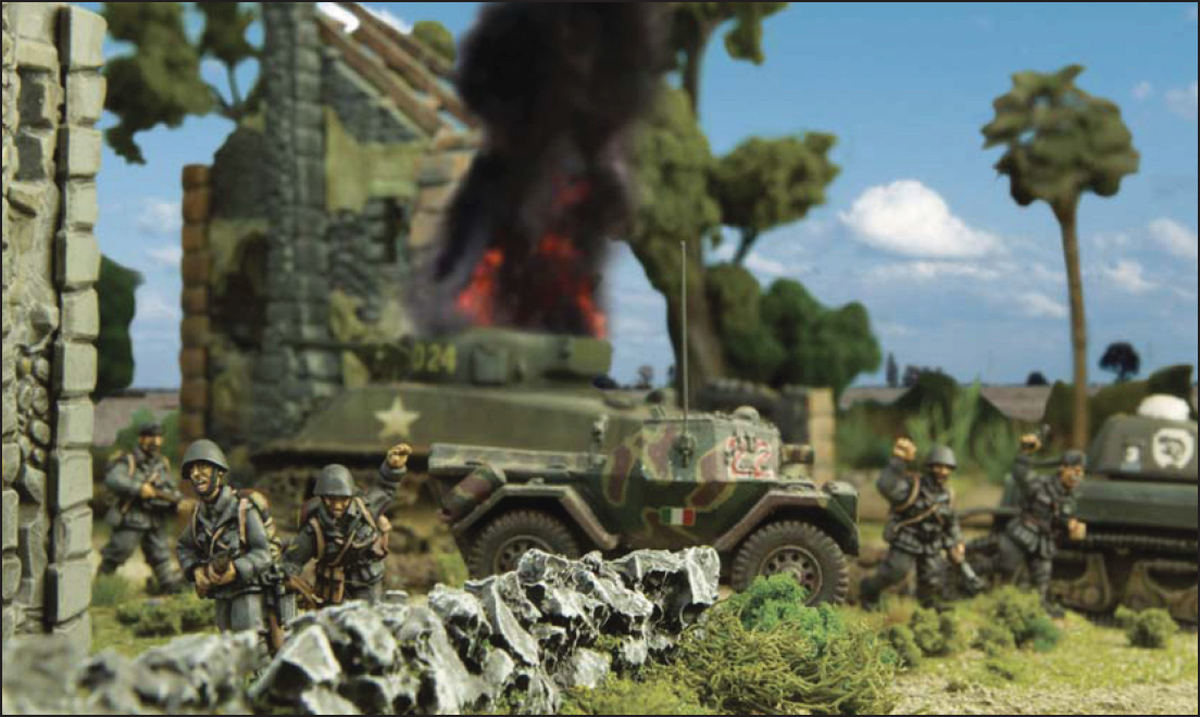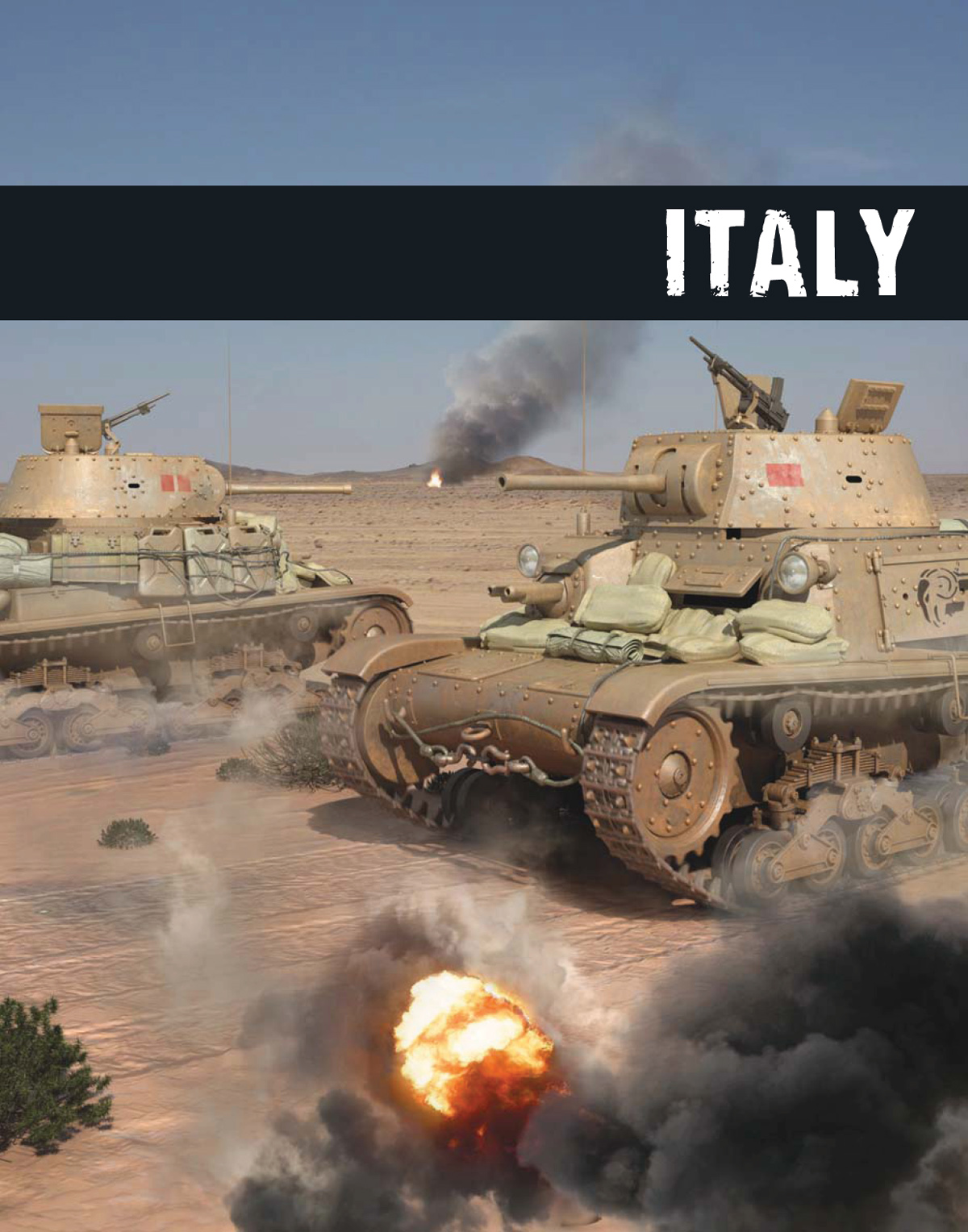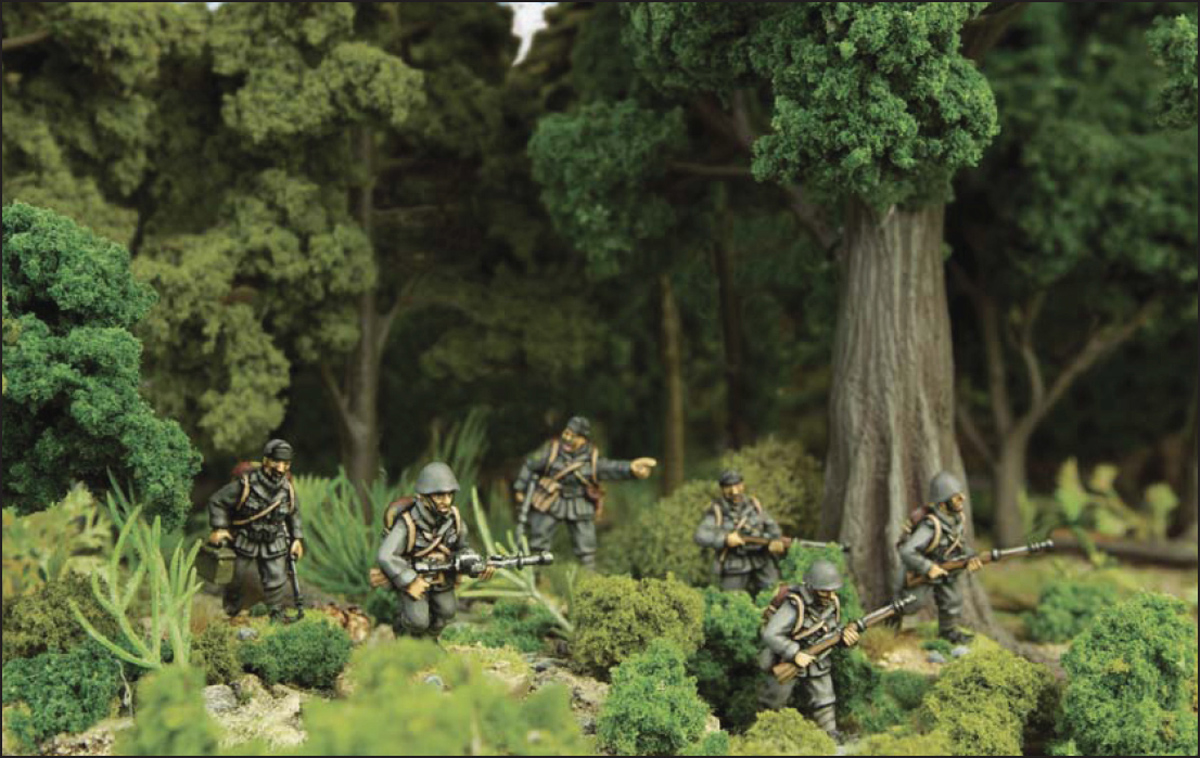CONTENTS
Italian Blackshirts, Raggruppamento Galbiati, Greece/Albania, Winter 1941, by Giuseppe Rava Osprey Publishing Ltd. Taken from Warrior 144: Italian Blackshirt 193545.
T his book is a supplement for the Bolt Action World War II tabletop wargame. It contains all the background, rules and army list information need to field an Italian, Finnish, Bulgarian, Hungarian or Romanian army in the Bolt Action game. Inside youll find details of the organisation and equipment used by these diverse forces during their battles against allied forces.
The book is divided into sections, each dealing with a separate army. Each section includes its own Army List. This provides all the information needed to field that army in your games. All the major weapons, guns and vehicles are covered, together with a selection of troop types of varying quality.
Alongside each list is at least one theatre selector, which gives the forces available for a particular campaign, theatre or phase of the war. In the case of a few of the armies covered by this book the theatres are somewhat limited compared to those available for major combatants such as the British or Germans. This reflects the historical battles fought by these armies as well as the requirement to cover a number of armies all in one book.
In most cases armies are also allowed to use some German equipment, the details of which appear in the separate Armies of Germany supplement, and players wishing to take advantage of these options will need a copy of that book.
Our aim has been to try and create playable armies that can hold their own against their historical opponents and which can be used to play games of a more general nature, taking on different armies from different campaigns or time periods should the players wish to do so. This presents particular challenges for some of the armies represented here, for example the Bulgarian forces, which saw little real fighting and were mostly engaged in anti-partisan operations, for which they were adequately equipped. On a tactical level however the kind of level represented by our games things were more equal. Often, desperate and innovative defenders were able to defeat the opposition as the Finns demonstrated time and time again in the face of a much larger and better-equipped Soviet enemy.
Mussolinis boys make the Americans pay dearly for every inch of ground
M 13/40 of the Ariete Armoured Division, Western Desert, August 1942, by Richard Chasemore Osprey Publishing Ltd. Taken from New Vanguard 195: Italian Medium Tanks.
Italys fascist dictator, Benito Mussolini, tried to capitalize on his close relationship with Germany by launching his own attacks on neighbouring lands. Despite copious propaganda to the contrary, the Regio Esercito or Royal Italian Army was ill prepared for offensive operations a fact quickly made evident. Italys first offensive action occurred in June 1940, when 32 divisions made a two-pronged attack on France, advancing along the Mediterranean coast and into the French Alps. Despite the French already being beaten to the north, resistance was unexpectedly stiff, inflicting far more casualties on the Italians than those suffered in return. Still, as Mussolini said to his army chief of staff, I only need a few thousand dead so that I can sit at the peace conference as a man who has fought.
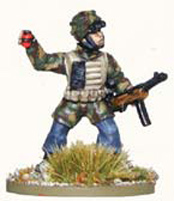
Italian propaganda boasted eight million bayonets were standing at the ready, prepared to fight wherever need be. In reality, the number was far smaller. A total of 4 million Italians served in the armed forces over the course of the entire war. This figure includes the years after 1943, when the majority of Italian fighters joined the Allied effort after the fall of Rome. Regardless of the claims of Mussolinis propaganda machine, Italys only successful campaign, launched on her own, was against British-held Somaliland. Invasions in Greece and colonial North Africa were unsuccessful until German allies could join stalled Italian attacks and turn the tide. Lacking true armoured might, Italys gains during World War II were made on the backs of her infantry divisions.
The Italian infantry division was unique for the era, making use of a binary structure. Two regiments made up a division, rather than the usual triangle or square shape utilizing three or four divisions respectively. Several infantry divisions also had two battalions of Blackshirts attached to provide a political, fascist element to the regular army. Infantry divisions were well supported by artillery, although most of was World War I vintage. Barring a few exemplary veteran divisions, much of the Italian army was untested and poorly equipped to fight a modern war.
Learning from their early experiences in North Africa, much of the Italian forces underwent a complete re-organization. This AS42 organization embraced the concept of few men, many weapons and re-organized several infantry divisions into lean combat units. The core company was integrated into a battle group with a higher proportion of machine and antitank guns. In theory, these AS42 infantry divisions were to be highly mechanized, though in practice that was rarely the case. These restructured units did, however, prove to strengthen Italian defensive positions.
The army list and theatre selectors described in this book include units that fought in the Regio Esercito up to the armistice of early September 1943 that marked the surrender of the Italian armed forces to the Allies. After that, Italian soldiery broke up into many different factions. Some would enroll with the Allies and were re-equipped with American gear; some would continue to fight alongside their German former comrades in the Repubblica Sociale, a Nazi-controlled puppet state in northern Italy; some would join the many partisan bands that roamed the countryside and the mountains of the Italian peninsula during the bitter civil war that followed Italys capitulation; while some would just attempt to lose themselves amongst the civilian population, and probably end as slave labour in German prison camps.
Italian troops close with the enemy
Italian troops scurry through the forests of Russia
Italians in Bolt Action present some interesting ideas. Their vehicles, while outmatched by many of their opponents, are quite capable at taking on infantry and light guns. Their infantry provide lots of flexibility and modelling opportunities, as well as interesting challenges during game play. From the elite

